Centre for excellence in theoretical and applied bushfire management
Red Eagle is an independent Centre for Excellence for bushfire science in Victoria and Australia.
We check the quality of the science done in the name of bushfire behaviour and risk management, and we monitor how it is used by authorities.
The Centre builds on the work in our book “The science of bushfire behaviour”, where we laid the foundations to progress the discipline of bushfire behaviour from immature to mature. We find that science is good if it has clear theoretical basis that can be traced back to first principles.
Why is this important? High quality bushfire solutions rely on high quality science. Progress in bushfire protection stagnates when the quality of science is poor.
Our vision is to make Australia bushfire-protected, starting with this simple building block: PROTECT EACH HOUSE FROM FIRE DAMAGE. Our philosophy is simple. When we save the house from damage in a severe bushfire, we save the house and the person. When we protect the neighbourhood, we protect the community.
To protect a house from bushfire attack on a worst case day relies on high quality science. Too often, we see authorities apply well meaning solutions that lack scientific merit.
There is only one way to defeat the bushfire enemy – with knowledge and skill. Knowledge and skill derive from good science
There is only one way to protect a house – neutralise the threat agents. Knowledge and skill to manage threat agents derive from good science
Therefore, the Centre of Excellence analyses and publishes reports about the merits of research, policy, assertions, spin, and proposals, whether from governments, organisations or neighbours. If we see good science we use it. If we see poor science, we expose it. If we see authorities use poor science, we advise them.
The Centre also provides a link between scientific research and practical application. There is often a huge gap between researchers and practitioners. We review the research and look for practical applications to house protection. We look at current practices and if current house protection outcomes are poor, we search for verification in the research world or we undertake or suggest fruitful areas for research. If outcomes are successful, we search for further improvements.
